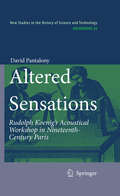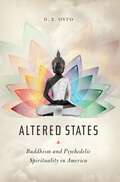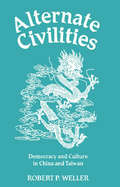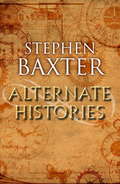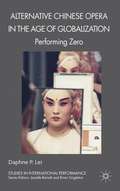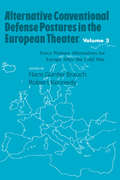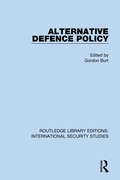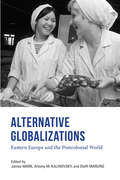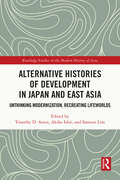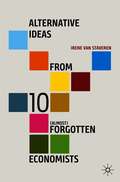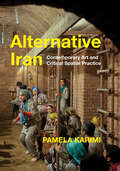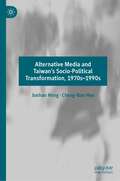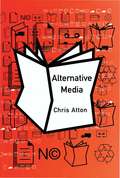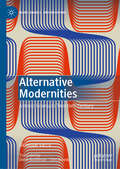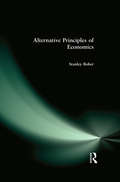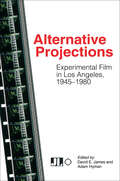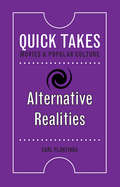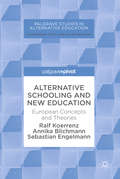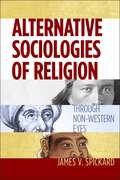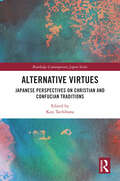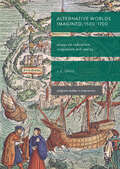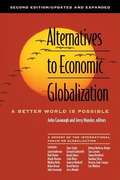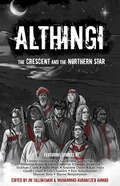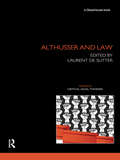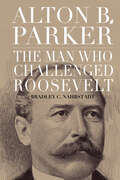- Table View
- List View
Altered Sensations: Rudolph Koenig’s Acoustical Workshop in Nineteenth-Century Paris (Archimedes #24)
by David PantalonyRudolph Koenig was one of the more prolific and colourful instrument makers in the renowned nineteenth-century precision instrument trade of Paris. Beginning his career as a violin maker, in 1858 the young Prussian immigrant shifted his talents towards the growing field of acoustics. Altered Sensations is a portrait of his vibrant atelier, a place of construction, commerce and experiment. For over forty years it was also a popular meeting place for scientists, artisans, musicians and teachers. Using archival and collection research from across North American and Europe, David Pantalony has traced the material and social influences of this space on the development of modern acoustics. In particular, he has detailed the manner in which Koenig modified, extended, spread and challenged Hermann von Helmholtz's Sensations of Tone. A large part of the research on Koenig comes from the actual products of his workshop which survive in museums and collections around the world. The second section of Altered Sensations provides a Catalogue Raisonné of Koenig's entire line of instruments, including their history, details from specific examples, locations, and references in the literature. This catalogue will serve as a practical guide for curators and researchers as well as a comprehensive overview of nineteenth-century acoustical practice.
Altered States: Buddhism and Psychedelic Spirituality in America
by Douglas OstoIn the 1960s, Americans combined psychedelics with Buddhist meditation to achieve direct experience through altered states of consciousness. As some practitioners became more committed to Buddhism, they abandoned the use of psychedelics in favor of stricter mental discipline, but others carried on with the experiment, advancing a fascinating alchemy called psychedelic Buddhism. Many think exploration with psychedelics in Buddhism faded with the revolutionary spirit of the sixties, but the underground practice has evolved into a brand of religiosity as eclectic and challenging as the era that created it. <P><P>Altered States combines interviews with well-known figures in American Buddhism and psychedelic spirituality—including Lama Surya Das, Erik Davis, Geoffrey Shugen Arnold Sensei, Rick Strassman, and Charles Tart—and personal stories of everyday practitioners to define a distinctly American religious phenomenon. The nuanced perspective that emerges, grounded in a detailed history of psychedelic religious experience, adds critical depth to debates over the controlled use of psychedelics and drug-induced mysticism. The book also opens new paths of inquiry into such issues as re-enchantment, the limits of rationality, the biochemical and psychosocial basis of altered states of consciousness, and the nature of subjectivity.
Alternate Civilities: Democracy and Culture in China and Taiwan
by Robert P. WellerSome Asian political leaders and Western academics have recently claimed that China is unlikely to produce an open political system. This claim rests on the idea that ?Confucian cultureOCO provides an alternative to Western civil values, and that China lacked the democratic traditions and even the horizontal institutions of trust that could build a civil society. An opposed school of thought is far more optimistic about democracy, because it sees market economies of the kind China has begun to foster as pushing inexorably against authoritarian political control and reproducing Western patterns of change. "Alternate Civilities" argues for a different set of political possibilities. By comparing China with TaiwanOCOs new and vibrant democracy, it shows how democracy can grow out of Chinese cultural roots and authoritarian institutions. The business organizations, religious groups, environmental movements, and womenOCOs networks it examines do not simply reproduce Western values and institutions. These cases point to the possibility of an alternate civility, neither the stubborn remnant of an ancient authoritarian culture, nor a reflex of market economics. They are instead the active creation of new solutions to the problems of modern life. "
Alternate Histories
by Stephen BaxterHere, collected for the first time in eBook form, are seven of Stephen Baxter's most remarkable and enjoyable novels, all dealing with alternate histories.In the TIME'S TAPESTRY series - containing the novels EMPEROR, CONQUEROR, NAVIGATOR and WEAVER - we see a series of different versions of our own world's history, constantly changing and being altered. Covering the time from the Roman occupation of Britain through to the German invasion of 1940, this series explains why our history is the way it is, and what might have happened differently.In the NORTHLAND trilogy (STONE SPRING, BRONZE SUMMER, IRON WINTER), Baxter explores an alternative creation of the British landscape, following a stone-age tribe from the now-flooded land-bridge that once connected Great Britain and Europe. In their frantic attempts to hold back the rising seas, the people of Northland will discover new techniques and technologies - discoveries that will change the course of human civilisation.
Alternative Chinese Opera in the Age of Globalization
by Daphne P. LeiBringing the study of Chinese theatre into the 21st-century, Lei discusses ways in which traditional art can survive and thrive in the age of modernization and globalization. Building on her previous work, this new book focuses on various forms of Chinese 'opera' in locations around the Pacific Rim, including Hong Kong, Taiwan and California.
Alternative Conventional Defense Postures In The European Theater: Military Alternatives for Europe after the Cold War (Alternative Conventional Defense Postures In The European Theater Ser.)
by Robert Kennedy Hans Günter BrauchFirst published in 1993. Routledge is an imprint of Taylor & Francis, an informa company.
Alternative Defence Policy (Routledge Library Editions: International Security Studies #1)
by Gordon BurtThis book, first published in 1988, represents a unique attempt to combine a discussion of an alternative British defence policy in terms of military strategy and new technology, with a consideration of how this policy might be secure in political terms. Written against a background of a possible future Labour government in the late 1980s with a radically different defence policy to the Conservative Government of the day, it considers questions such as: Would conventional deterrence really be effective? Just what is the Labour Party’s defence policy? How precisely might Britain be transformed into a non-aligned, non-militarist state?
Alternative Globalizations: Eastern Europe and the Postcolonial World
by James Mark Artemy M. Kalinovsky Steffi MarungGlobalization has become synonymous with the seemingly unfettered spread of capitalist multinationals, but this focus on the West and western economies ignores the wide variety of globalizing projects that sprang up in the socialist world as a consequence of the end of the European empires. This collection is the first to explore alternative forms of globalization across the socialist world during the Cold War. Gathering the work of established and upcoming scholars of the Soviet Union, Eastern Europe, and China, Alternative Globalizations addresses the new relationships and interconnections which emerged between a decolonizing world in the postwar period and an increasingly internationalist eastern bloc after the death of Stalin. In many cases, the legacies of these former globalizing impulses from the socialist world still exist today. Divided into four sections, the works gathered examine the economic, political, developmental, and cultural aspects of this exchange. In doing so, the authors break new ground in exploring this understudied history of globalization and provide a multifaceted study of an increasing postwar interconnectedness across a socialist world.
Alternative Histories of Development in Japan and East Asia: Unthinking Modernization, Recreating Lifeworlds (Routledge Studies in the Modern History of Asia)
by Timothy D. Amos Akiko Ishii Samson LimThis book examines the history of development in East Asia in terms of material change and human-nature relations from the perspectives of people living in Asia in modern and pre-modern periods.By challenging the reader to “unthink” what modern development is, each chapter offers a case study which discovers and reconstructs indigenous forms of knowledge and local practice related to material change. In doing so, the book illuminates the point where modern notions of development emerged and thus aids in the process of understanding how they achieved hegemonic status. This in turn expands the notion of what development can and should entail and provides valuable pathways for rethinking our relations with the social world and the environment.This book will be a valuable resource to students and scholars of Asian development, Asian history and environmental history.
Alternative Ideas from 10 (Almost) Forgotten Economists
by Irene van StaverenHow should we address today’s big problems, and what we can take from icons of economics past? How would John Maynard Keynes have resolved today’s debt problem, or how would Adam Smith have assessed the European carbon emission trading market? This book applies the ideas of ten renowned economists (Marx, Minsky, Keynes, Knight, Bergmann, Veblen, Sen, Myrdal, Smith, Robinson) to real world economic problems, directly or indirectly related to the causes and consequences of the 2008 financial crisis. Each chapter presents an economist, and structures the ‘problem’, the ‘insight’ (the economist’s idea), the ‘economist’ (short bio), and two ‘practices’ offering real-world alternatives. This book presents a lively and original approach that will be of interest to economists and non-economists alike, discussing key elements of an economics for a postcapitalist economy and connecting policy insights to real-world problems of today.
Alternative Iran: Contemporary Art and Critical Spatial Practice
by Pamela KarimiAlternative Iran offers a unique contribution to the field of contemporary art, investigating how Iranian artists engage with space and site amid the pressures of the art market and the state's regulatory regimes. Since the 1980s, political, economic, and intellectual forces have driven Iran's creative class toward increasingly original forms of artmaking not meant for official venues. Instead, these art forms appear in private homes with "trusted" audiences, derelict buildings, leftover urban zones, and remote natural sites. While many of these venues operate independently, others are fully sanctioned by the state. Drawing on interviews with over a hundred artists, gallerists, theater experts, musicians, and designers, Pamela Karimi throws into sharp relief the extraordinary art and performance activities that have received little attention outside Iran. Attending to nonconforming curatorial projects, independent guerrilla installations, escapist practices, and tacitly subversive performances, Karimi discloses the push-and-pull between the art community and the authorities, and discusses myriad instances of tentative coalition as opposed to outright partnership or uncompromising resistance. Illustrated with more than 120 full-color images, this book provides entry into unique artistic experiences without catering to voyeuristic curiosity around Iran's often-perceived "underground" culture.
Alternative Media and Taiwan’s Socio-Political Transformation, 1970s–1990s
by Junhao Hong Cheng-Nan HouThis book systematically and comprehensively studies on alternative media in Taiwan, using a historical approach and primary data and first hand collected materials to examine how political openness and social movement in the 1980s through the 1990s in Taiwan enabled the rapid growth and wide development of Taiwan’s alternative media, what impact the alternative media in Taiwan had on its socio-political transformation, and what implications Taiwan’s case of alternative media has for other societies, especially for other Asian societies. This book would be a good reading for intellectuals, media professionals, government analysts, and the general public as well, who are interested in this topic.
Alternative Media: Alternative Media In A Networked World (Culture, Representation And Identity Ser.)
by Chris AttonWhat are `alternative media'? Are they the same as underground, radical or oppositional media? In this book, Chris Atton offers a fresh introduction to alternative media: one which is not limited to `radical' media, but can also account for newer cultural forms such as zines, fanzines, and personal websites. Alternative Media: #65533; Examines how and why people produce and use alternative media - to make meaning, to interpret, and to change the world in which they live #65533; Encompasses a wide range of alternative media and draws on examples from both the United States and United Kingdom #65533; Locates contemporary alternative media in their cultural, historical and political contexts Alternative Media provides a timely corrective to media theorizing which focuses almost exclusively on the output of the media conglomerates. As such it will be an essential purchase for all students and researchers with an interest in the true nature of the contemporary media environment.
Alternative Modernities: Antonio Gramsci's Twentieth Century (Marx, Engels, and Marxisms)
by Giuseppe VaccaAntonio Gramsci lived the Great War as a “historic break,” a profound experience that left an indelible mark on the development of his political thought. Translated into English for the first time, Alternative Modernities reconstructs and analyses this critical period of Gramsci’s intellectual formation through a systematic analysis of his writings from 1915 to 1935. For Gramsci, Soviet Communism, “Americanism,” and the “new” Fascist State were the principle responses to the crisis of the old world order. He portrayed them as the three protagonists of twentieth-century modernity, alternatives destined to tragically clash in the worldwide struggle for hegemony. Among the arguments in his Prison Notebooks, Gramsci casts doubt on the political strategy of Soviet Communism and the theoretical underpinnings of “official Marxism.” Instead, he suggests a radical revision of Marxism by breathing life into a new interpretation whose fundamental concepts are: politics as the struggle for hegemony, the “passive revolution” as a historical paradigm of modernity, and the philosophy of praxis as the welding between visions of the worlds, historical analyses, and political strategies. Gramsci’s intuitions culminate in a new theory of the political subject, supported by a reflection upon the 20th century that still speaks to us today, pointing the way toward a new narrative of world history.
Alternative Principles of Economics
by Stanley BoberThis is the first book to provide a complete introduction to Post-Keynesian and other alternative theories of economics. Concise yet comprehensive, and written to be accessible to a wide audience, it offers a unique opportunity to enhance traditional neo-classical economics training with authoritative coverage of the full range of the non-orthodox paradigm.
Alternative Projections: Experimental Film In Los Angeles, 1945-1980
by David E. James Adam HymanAlternative Projections: Experimental Film in Los Angeles, 1945-1980 is a groundbreaking anthology that features papers from a conference and series of film screenings on postwar avant-garde filmmaking in Los Angeles sponsored by Filmforum, the Getty Foundation, and the University of Southern California's School of Cinematic Arts, together with newly-commissioned essays, an account of the screening series, reprints of historical documents by and about experimental filmmakers in the region, and other rare photographs and ephemera. The resulting diverse and multi-voiced collection is of great importance, not simply for its relevance to Los Angeles, but also for its general discoveries and projections about alternative cinemas.
Alternative Realities (Quick Takes: Movies and Popular Culture)
by Carl PlantingaFrom their very inception, movies have served two seemingly contradictory purposes. On one hand, they transport us to fantastical worlds and display mind-boggling special effects. On the other, they can document actual events and immerse us in scenarios that feel so realistic, we might forget we are watching a work of fiction. Alternative Realities explores how these distinctions between cinematic fantasy and filmic realism are more porous than we might think. Through a close analysis of CGI-heavy blockbusters like Wonder Woman and Guardians of the Galaxy, it considers how even popular fantasies are grounded in emotional and social realities. Conversely, it examines how mockumentaries like This is Spinal Tap satirically call attention to the highly stylized techniques documentarians use to depict reality. Alternative Realities takes us on a journey through many different genres of film, from the dream-like and subjective realities depicted in movies like Eternal Sunshine of the Spotless Mind and Memento, to the astonishing twists of movies like Shutter Island and The Matrix, which leave viewers in a state of epistemic uncertainty. Ultimately, it shows us how the power of cinema comes from the unique way it fuses together the objective and the subjective, the fantastical and the everyday.
Alternative Schooling and New Education: European Concepts and Theories (Palgrave Studies in Alternative Education)
by Ralf Koerrenz Annika Blichmann Sebastian EngelmannThis book examines the European discussion about alternative schooling in the 20th century. It refers to a stream of concepts that are often described as New Education, Progressive Education, Education Nouvelle or Reformp#65533;dagogik, and discusses a range of different models of alternative schooling. Exploring the works of a range of continental educational philosophers, including Lietz, Blonsky, Kerschensteiner, Freinet, Decroly and Petersen, the book offers a unique insight into texts not yet translated into English. These educational models are presented with regards to the biographical background of the authors; the crucial elements of their construction; the historical interconnections between schooling, society and culture; and finally their connection to today's discussions in educational sciences. The book will be highly relevant for researchers and advanced students working on the theory, history and practice of schooling, particularly those with a focus on alternative schooling and the philosophy of education.
Alternative Sociologies of Religion: Through Non-Western Eyes
by James V SpickardUncovers what the sociology of religion would look like had it emerged in a Confucian, Muslim, or Native American culture rather than in a Christian oneSociology has long used Western Christianity as a model for all religious life. As a result, the field has tended to highlight aspects of religion that Christians find important, such as religious beliefs and formal organizations, while paying less attention to other elements. Rather than simply criticizing such limitations, James V. Spickard imagines what the sociology of religion would look like had it arisen in three non-Western societies. What aspects of religion would scholars see more clearly if they had been raised in Confucian China? What could they learn about religion from Ibn Khaldun, the famed 14th century Arab scholar? What would they better understand, had they been born Navajo, whose traditional religion certainly does not revolve around beliefs and organizations? Through these thought experiments, Spickard shows how non-Western ideas understand some aspects of religions—even of Western religions—better than does standard sociology. The volume shows how non-Western frameworks can shed new light on several different dimensions of religious life, including the question of who maintains religious communities, the relationships between religion and ethnicity as sources of social ties, and the role of embodied experience in religious rituals. These approaches reveal central aspects of contemporary religions that the dominant way of doing sociology fails to notice. Each approach also provides investigators with new theoretical resources to guide them deeper into their subjects. The volume makes a compelling case for adopting a global perspective in the social sciences.
Alternative Virtues: Japanese Perspectives on Christian and Confucian Traditions (Routledge Contemporary Japan Series)
by Koji TachibanaIncorporating various perspectives on the Japanese notion of virtue, Alternative Virtues investigates and expands our current understanding of virtue and presents a foundational case study of an alternative approach to virtues.The study of virtue has long been dominated by Western (i.e., Christian) and far-Eastern (i.e., Confucian) points of view. However, Japanese thinkers and scholars have struggled with these traditions. The rise of cultural intermingling with these traditions has created a unique code of values in Japan, which have grown from their own historical and cultural sources other than the Christian and Confucian traditions. Viewed through the filter of Japanese history and culture as well as focusing on different contexts in Japan, the book investigates both moral and epistemic virtues. Discussing the theoretical and practical implications that such alternative virtues may have on our lives, this book will contribute to reforming the current research trends in virtue theory and encouraging the wider public to consider the notion of virtue from a fresh perspective.Due to the content and scope of the book, it will appeal to a variety of readers– both locally and internationally–interested not only in Japanese historical, cultural, and philosophical investigations of virtues but also in learning more about alternative perspectives on virtues. This readership includes scholars and university students (both undergraduate and postgraduate) in the fields of philosophy, history, cultural studies, moral psychology, and education.
Alternative Worlds Imagined, 1500-1700: ssays on Radicalism, Utopianism and Reality (Palgrave Studies in Utopianism)
by J. C. DavisThis book address the relationship between utopian and radical thought, particularly in the early modern period, and puts forward alternatives approaches to imagined ‘realities’. Alternative Worlds Imagined, 1500-1700 explores the nature and meaning of radicalism in a traditional society; the necessity of fiction both in rejecting and constructing the status quo; and the circumstances in which radical and utopian fictions appear to become imperative. In particular, it closely examines non-violence in Gerrard Winstanley’s thought; millennialism and utopianism as mutual critiques; form and substance in early modern utopianism/radicalism; Thomas More’s utopian theatre of interests; and James Harrington and the political necessity of narrative fiction. This detailed analysis underpins observations about the longer term historical significance and meaning of both radicalism and utopianism.
Alternatives To Economic Globalization
by The Editors of the International Forum on Globalizationargues that the current model of economy is both unjust and unsustainable and presents alternatives
Althingi: The Crescent and the Northern Star
by Muhammad Aurangzeb Ahmad Josh GillinghamIn our increasingly polarized world there is an urgent need for cross-cultural conversations, bridges of understanding between people of different beliefs, and a recommitment to a common understanding of our shared history: the history not of any one particular group but of humanity itself. Althingi: The Crescent and the Northern Star, co-edited by Muhammad Aurangzeb Ahmad (A Mosque Among the Stars, Islamicates) and Joshua Gillingham (The Gatewatch, Old Norse for Modern Times), is an anthology of historical fiction which explores the intricate and often-overlooked interactions between intrepid Viking voyagers and inquisitive emissaries from the powerful Islamic kingdoms. Featuring stories by an incredible slate of authors writing in the historical Althingi universe, Althingi: The Crescent and the Northern Star offers a glimpse into a fascinating forgotten past and will prove a must-read for fans of both Viking and Islamic history.
Althusser and Law (Nomikoi: Critical Legal Thinkers)
by Laurent De SutterAlthusser and Law is the first book specifically dedicated to the place of law in Louis Althusser’s philosophy. The growing importance of Althusser’s philosophy in contemporary debates on the left has - for practical and political, as well theoretical reasons - made a sustained consideration of his conception of law more necessary than ever. As a form of what Althusser called ‘Ideological State Apparatuses’, law is at the forefront of political struggles: from the destruction of Labour Law to the exploitation of Patent Law; from the privatisation of Public Law to the ongoing hegemony of Commercial Law; and from the discourse on Human Rights to the practice of judicial courts. Is Althusser still useful in helping us to understand these struggles? Does he have something to teach us about how law is produced, and how it is used and misused? This collection demonstrates that Althusser’s ideas about law are more important, and more contemporary, than ever. Indeed, the contributors to Althusser and Law argue that Althusser offers a new and invaluable perspective on the place of law in contemporary life.
Alton B. Parker: The Man Who Challenged Roosevelt
by Bradley C. NahrstadtThis first full-length biography of Alton Brooks Parker provides an in-depth look into the life, career, and legacy of one of the most important New Yorkers of the Gilded Age. Parker had the courage to challenge Theodore Roosevelt for the presidency in 1904—at the height of Roosevelt’s popularity—and was a transition point between the conservative and the new, progressive wing of the Democratic Party. Based on new archival research, this book contributes to our understanding of how political campaigns were conducted during the Gilded Age/Progressive Era, in comparison to modern campaigns. It also provides insights into the changing Democratic Party as it transformed from the presidency of Grover Cleveland to the presidencies of Woodrow Wilson and Franklin D. Roosevelt.
